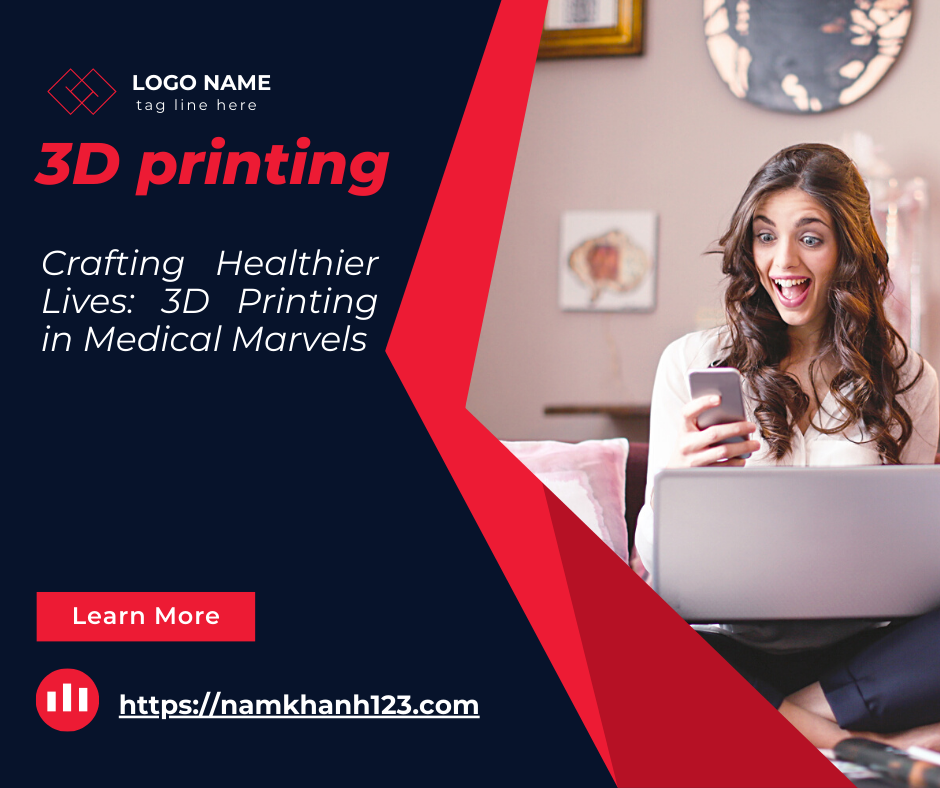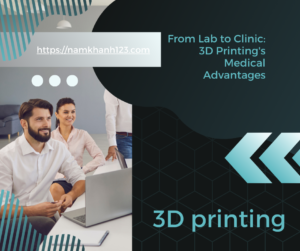Introduction:
In the ever-evolving landscape of healthcare, the fusion of technology and innovation is reshaping patient care as we know it. One such groundbreaking innovation is 3D printing, a technology that is carving a path toward healthier lives. In this article, we delve into the world of 3D printing’s transformative role in medical marvels, exploring its impact on patient care, medical research, and the future of healthcare.
Ethical Considerations and Patient-Centered Care:
In the pursuit of crafting healthier lives through 3D printing, it is essential to uphold ethical standards and prioritize patient-centered care. The responsible use of this technology includes obtaining informed consent from patients, respecting their autonomy, and ensuring that they understand the implications of 3D-printed medical interventions.
Healthcare professionals must also engage in ongoing discussions about the ethical implications of 3D bioprinting, especially as it advances toward the creation of functional organs. The ethical considerations surrounding organ sourcing, transplantation, and patient consent are complex and require thoughtful deliberation.
The Global Impact and Accessibility:
3D printing in healthcare is not limited by geographical boundaries. Its potential to craft healthier lives extends globally. Initiatives are emerging to make 3D printing technology accessible to underserved regions, where it can address critical healthcare challenges.
Collaborative efforts between humanitarian organizations, governments, and healthcare providers aim to establish 3D printing hubs in remote areas. These hubs can produce essential medical supplies, prosthetics, and other devices, effectively bridging the healthcare gap between urban and rural communities.
The Future of Healthcare:
As we look to the future, 3D printing’s role in crafting healthier lives is poised for further expansion. Continued research into advanced materials, such as biocompatible polymers and bioinks, will open new frontiers in tissue engineering and regenerative medicine. The ability to create functional, 3D-printed organs may become a reality, offering hope to countless patients on transplant waiting lists.
Furthermore, the integration of artificial intelligence (AI) and 3D printing promises to enhance the design and production of medical devices, optimizing patient outcomes and reducing costs. AI algorithms can assist in generating precise anatomical models and custom implants, further refining the field of personalized medicine.
Personalized Precision in Patient Care:
3D printing’s impact on patient care is nothing short of revolutionary. It enables healthcare professionals to craft customized medical solutions tailored to the unique needs of each patient. Whether it’s prosthetics, dental implants, or intricate surgical guides, 3D printing allows for a level of personalization that was previously unimaginable.
Surgeons now have access to precise 3D-printed models of a patient’s anatomy before stepping into the operating room. This preoperative planning reduces surgical errors, shortens recovery times, and enhances patient safety. The days of one-size-fits-all medical solutions are fading, replaced by personalized, patient-centric care.
Empowering Medical Research:
The impact of 3D printing extends beyond the operating room. It serves as a catalyst for medical research and innovation. Researchers can utilize 3D printing to replicate organs and tissues, creating highly accurate models for drug testing and disease studies. This approach accelerates drug development, minimizes the need for animal testing, and holds the promise of more effective treatments.
The field of 3D bioprinting is on the horizon, where functional organs and tissues can be printed using a patient’s cells. This breakthrough could revolutionize organ transplantation, addressing the global shortage of donor organs and improving the lives of countless patients.
Cost-Effective Solutions for Healthcare:
3D printing offers cost-effective solutions that benefit both patients and healthcare systems. Traditional manufacturing processes for medical devices and implants can be time-consuming and costly. 3D printing streamlines production, reduces costs, and accelerates the development of medical innovations.
Moreover, 3D printing can provide cost-effective solutions in resource-constrained environments. Remote or underserved areas can benefit from on-site 3D printing of essential medical supplies, such as prosthetics, dental implants, and customized orthopedic devices. This approach increases access to quality healthcare, even in the most remote corners of the world.
Challenges and Future Prospects:
While the potential of 3D printing in healthcare is vast, it also presents challenges that require careful consideration:
- Regulatory Framework: As 3D printing applications in healthcare expand, regulatory bodies must establish comprehensive guidelines to ensure patient safety, product quality, and ethical use.
- Data Security: Protecting patient data generated through 3D printing is crucial. Robust measures must be in place to safeguard sensitive information.
- Materials Advancements: Continued research into biocompatible and biodegradable materials is essential to unlock new possibilities in healthcare.
- Accessibility: Efforts are needed to ensure that 3D printing technology is accessible and affordable, especially in underserved regions.


